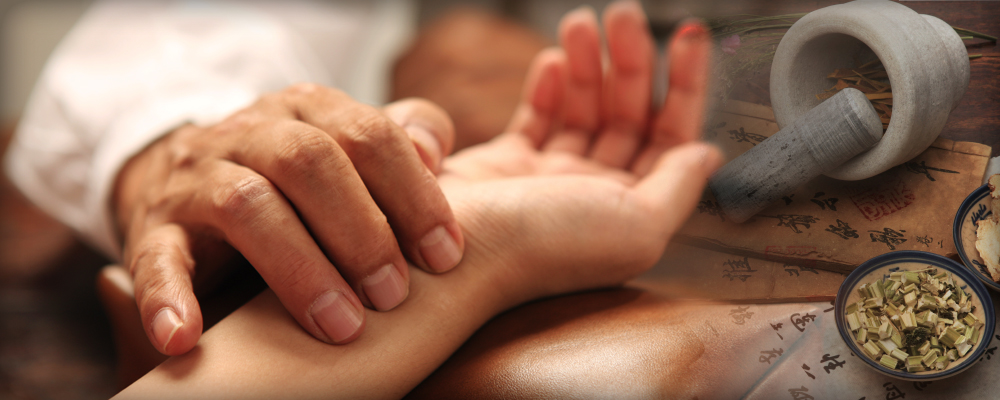Shop News
-
25/11/2025Ganoderma Benefits
-
07/02/2025Colds & Flu - treatment and prevention
-
24/01/2025Ginseng - Nature's anti-inflammatory
-
23/01/2025Curcumin Benefits
-
02/05/2024Allergies Tradicional Chinese Medicine
-
12/03/2024Food Combining and Chinese Medicine
-
23/08/2023Phytoestrogens
-
05/06/2023Ginseng Benefits
-
02/06/2023Aumento de precios de la marca Blue Poppy
-
20/07/2022Infertility and Chinese Medicine
-
10/05/2022Allergic Rhinitis
-
24/03/2022TCM Obesity and Its Causes
-
23/03/2022Cancer Prevention and Diet
-
26/01/2022Medicinal Mushrooms
-
18/12/2021Christmas Remedies
-
09/07/2021CANDIDIASIS
-
03/03/2021Chinese Herbal Medicine formula studied to improve cancer therapy
-
12/01/2021The benefits of Xiao Yao San
-
15/09/2020Coronavirus Protocol (summary)
-
01/06/2020TCM Principles for Weight Loss
-
12/02/2020Take Good Care of Your Qi
-
01/01/2020Cordyceps Sinensis Benefits
-
01/12/2019Prevention & Treatment of Colds & Flu
-
27/04/2019ANXIETY - causes and treatments
-
26/03/2019Prostatitis and Chinese Herbs
-
01/03/2019What is an Adaptogenic Herb?
-
05/02/2019New Jade Herbal Formulas
-
09/12/2018The Shen of the Heart
-
23/08/2018Hyperthyroidism and Hypothyroidism
-
05/07/2018FOCUS ON A REMEDY: WARM THE MENSES
-
04/04/2018Treating Insomnia With Chinese Herbal Medicine
-
25/03/2018Cordyceps Sinensis research
-
01/03/2018Chinese Herbal Medicine for Panic Attacks
-
17/01/2018Clinical application of the Clear Metal remedy for advanced stage of influenza
-
02/01/2018New Pediatric Formulas by "Blue Poppy"
-
07/11/2017BI SYNDROME
-
01/09/2017Chemotherapy and Anti-Oxidants
-
05/03/2017Lumbar Disc Herniation
-
31/01/2017Treatment Principles in Exterior Invasions
-
21/10/2016Healthy Aging and Oriental Medicine: Qi is the secret
-
23/09/2016Horny Goat's Weed Benefits
-
23/07/2016FOCUS ON A REMEDY: PROSPEROUS EARTH
-
25/06/2016Ginkgo Biloba Benefits
-
23/03/2016Blood Stasis
-
23/02/2016FOCUS ON A REMEDY: PROSPEROUS EARTH
-
23/01/2016CHRONIC FATIGUE SYNDROME
-
28/12/2015TONICS
-
24/10/2015A CASE HISTORY OF CHRONIC BRONCHITIS
-
23/09/2015Ganoderma Lucidum reduces obesity in mice
-
01/07/2015The Five Elements and Diet in Chinese Medicine
-
23/05/2015Daoist Sexual Practices
-
21/02/2015DEPRESSION
-
22/01/2015GLAUCOMA
-
20/12/2014ENDOMETRIOSIS
-
28/11/2014POLYCYSTIC OVARY SYNDROME
-
21/08/2014Ear infections and antibiotics
-
24/06/2014FOCUS ON A REMEDY: CHEMO-SUPPORT
-
21/03/2014Stomach-Yin Deficiency and Jade Spring
-
21/02/2014JOY, AN EMOTIONAL CAUSE OF DISEASE?
-
17/01/2014SEXUAL LIFE IN CHINESE MEDICINE
-
19/12/2013ON STAGNATION OF LUNG- AND HEART-QI
-
14/11/2013THREE TREASURES REMEDIES FOR PAIN
-
23/10/2013HEADACHE CASE HISTORY
-
22/10/2013.
-
12/07/2013Giovanni Maciocia Clinical Tip: Arouse Power
-
28/05/2013Blue Poppy - New Formulas
-
19/04/2013Case history - Chronic constipation
-
14/03/2013Three Treasures Webinar
-
31/01/2013Recurrent Bronchitis: a case history
-
31/12/2012FOCUS ON A REMEDY: SOOTHE THE SHEN
-
18/06/2012Herbs for the treatment of Anorexia
-
09/05/2012Three Treasures & Women's Treasures now available
-
09/04/2012REMEDY OF THE MONTH: CLEAR YANG
-
02/07/2011New Pediatric Formulas
-
28/04/2011Lingzhi slows progress of Alzheimer’s
-
18/10/2010European Legislation for natural products
-
19/09/2010700-year-old Chinese medicine can treat depression...
-
24/04/2010PDF Catalog
-
01/09/2009Swine Flue
Blood stasis is a common and damaging pathogenic factor that is at the root of many serious diseases. A characteristic of Blood stasis is that it can only occur after a prolonged period of time: thus, it is always a relatively serious pathogenic factors and one that leads to more serious diseases than Qi stagnation: for example, coronary heart disease, abdominal masses, tumours, high blood pressure, stroke, etc. By definition, Qi stagnation cannot, by itself, cause any of the above problems. Thus, whenever we see signs of Blood stasis, we know that the condition is one of long duration and the prognosis is less good than that for Qi stagnation.
thus, it is always a relatively serious pathogenic factors and one that leads to more serious diseases than Qi stagnation: for example, coronary heart disease, abdominal masses, tumours, high blood pressure, stroke, etc. By definition, Qi stagnation cannot, by itself, cause any of the above problems. Thus, whenever we see signs of Blood stasis, we know that the condition is one of long duration and the prognosis is less good than that for Qi stagnation.
1. AETIOLOGY
Blood stasis never arises independently (like Qi stagnation) but is always the consequence of other conditions, usually after a long period of time. Thus, there are no aetiological factors (diet, emotions, etc.) that give rise to Blood stasis by themselves as Blood stasis itself arises from other conditions. The conditions giving rise to Blood stasis are as follows:
Qi stagnation - LIV - HE
Internal Cold - Uterus - ST - HE
Heat or Fire - ST - INT - HE - LIV - UT
Qi deficiency - ST - HE
Blood deficiency - Uterus - HE, LIV
Phlegm - ST - INT - Uterus
2. PATHOLOGY
Blood is related to Qi and to Body Fluids. It is related to Qi first of all because Blood itself is a (very dense) form of Qi and secondly because it relies on Qi for its movement. "Qi is the commander of Blood; when Qi moves, Blood moves. Blood is the mother of Qi; where Blood goes, Qi goes". On the other hand, Blood is part of Body Fluids and is formed from them (with the participation of Gu Qi). Thus, both Qi and Body Fluids pathology may play a role in Blood stasis. For example, Qi stagnation is a very common cause of Blood stasis, while a pathology of the Body Fluids, such as Phlegm, may also lead to Blood stasis. Another pathology of Body Fluids leading to Blood stasis occurs when Heat or Fire condense the Body Fluids and make the blood more dense, leading to Blood stasis. We can review the pathology of the various causes of Blood stasis.
1) Qi stagnation
Qi is the commander of Blood and Blood relies on the pushing action of Qi for its movement; any Qi stagnation may lead to Blood stasis after some time.
2) Internal Cold
Both Full Cold and Empty Cold obstruct the movement of Qi and Yang and may lead to Blood stasis; this also occurs because Cold congeals Blood.
3) Heat or Fire
Heat or Fire injure and condense the body fluids and therefore Blood since Blood is part of body fluids. This may occur in the Heart, Liver, Stomach, Lungs, Intestines and Uterus.
4) Qi deficiency
Qi deficiency may lead to Blood stasis because deficient Qi fails to move and transport and may lead to Qi stagnation and Blood stasis.
5) Blood deficiency
Blood deficiency may also lead to Blood stasis because Blood is the mother of Qi, when Blood is deficient, Qi is also usually deficient, Qi fails to move Blood and Blood stasis ensues. A simultaneous Blood deficiency and stasis is more common in women.
6) Phlegm
There is a strong interaction between Phlegm and Blood stasis as both are pathologies of Body Fluids. Phlegm is a pathological accumulation of turbid fluids, while Blood stasis is a pathological accumulation of Blood; since there is an interchange between Blood and Body Fluids, Blood stasis and Phlegm interact with each other and aggravate each other. A simultaneous condition of Blood stasis and Phlegm is common in the elderly and it is a particular pernicious combination leading to serious diseases which are difficult to treat.
The first three aetiological factors are the most important ones.
CONSEQUENCES OF BLOOD STASIS
Blood stasis can itself become a cause of disease. The four consequences of Blood stasis may be:
Blood deficiency
Bleeding
Dryness
Qi deficiency
 3. DIAGNOSIS
3. DIAGNOSIS
The main manifestations of Blood stasis are:
Pain
Swellings, lumps, tumours, masses
Colour purple
Purple tongue
Dark complexion
Dry nails and hair
Bleeding
Maculae
Stiffness
Dreaming a lot
Poor memory
Dark moles
Dark eye sockets
Purple nose bridge
Purple venules visible under the skin, often on the legs
Umbilicus bulging out
Hardness of the abdomen on palpation
Enlarged ends of fingers and toes
Skin not elastic, lustreless, dark, scaly, dry
A history of chronic illness with repeated bouts
Adhesions and scars from surgery
Poor memory
Pulse. The pulse indicating Blood stasis may be Wiry, Firm or Choppy
Irregular periods, painful periods with dark clots, hesitant start to periods, periods starting and stopping, infertility
Fever (sometimes)
Mental restlessness
Thirst with desire to gargle but not to swallow
Abdominal pain
4. TREATMENT PRINCIPLES AND METHODS
a) BEN-BIAO and XU-SHI
Blood stasis is always the Manifestation (Biao) of a condition because it arises from other conditions such as Qi stagnation, Cold, Heat, etc. Blood stasis is a Full condition by definition. Thus, the question arises how to approach a patient who suffers from Blood stasis (Full-Biao) but also from an underlying condition that is the Ben (which, itself, may be Xu or Shi).
The Ben of Blood stasis may be a Deficiency (of Qi or Blood) or a Fullness (Cold, Heat or Phlegm). Thus, treating Ben consists in either tonifying Qi and Blood or in scattering Cold, clearing Heat or resolving Phlegm. Since Blood stasis is always a chronic condition, generally speaking one needs to treat both Ben and Biao simultaneously. However, especially when herbal medicine is used, the question arises whether one should start with a formula to invigorate Blood modifying it to treat the Ben, or start with a formula to treat the Ben modifying it to invigorate Blood. The answer is simple: in more acute cases when the symptoms and signs of Blood stasis predominate, start with a modification of a formula to invigorate Blood and eliminate stasis; in more chronic cases when the symptoms and signs of Blood stasis are less pronounced, start with a modification of a formula that treats Ben. My personal inclination, however, is always to clear pathogenic factors first, i.e. in the case, invigorate Blood and eliminate stasis.
5. THREE TREASURES REMEDIES FOR BLOOD STASIS
STIR FIELD OF ELIXIR
This is a variation of Ge Xia Zhu Yu Tang Eliminating Stasis Below the Diaphragm Decoction. It is used for Blood stasis in the Lower Burner. This is very common in women. It may therefore be used for painful periods from Blood stasis.
INVIGORATE BLOOD AND STEM THE FLOW
This is a very useful remedy in gynaecological conditions. It simultaneously invigorate Blood and stops bleeding. This action is very useful as bleeding from Blood stasis is a common occurrence in gynaecological conditions. For example, this occurs frequently in endometriosis when the periods are very painful and the menstrual blood has dark clots (Blood stasis) but the periods are also heavy. Paradoxically, Blood stasis may aggravate heavy bleeding as the stagnant blood obstructs the uterus so that new blood has nowhere to go and leaks out. In all these cases, the remedy Invigorate Blood and Stem the Flow is very useful.. It is best used in phases 4 and 1.
HARMONIZING THE MOON
This remedy is specific for endometriosis. It not only invigorate Blood but it also "breaks" Blood and dissolves masses. It is used for endometriosis because the endometriosis lesions are considered a form of Abdominal Masses (zheng jia) from Blood stasis.
CLEAR THE ROOT
Clear the Root is not specific for Blood stasis as it also resolves Phlegm and Dampness and clears Heat. However, it also invigorates Blood in the prostate.
By Giovanni Maciocia
More Blood Stasis Formulas:

XUE FU ZHU YU TANG (Indications: Cardiovascular disorders, such as coronary artery disease (CAD), angina pectoris, and rheumatic heart disease, chondrocostritis, external injury to the chest, and various psychiatric disorders, such as mood disorders, sleep disorders, palpitations, anxiety, agitation, insomnia, a feeling of anxiety at bedtime, irritability, mental confusion, depression, postconcussion syndrome, chronic stabbing headaches, etc.)
FU FANG DAN SHEN PIAN (Indications: heart disease, endocarditis, myocarditis, angina pectoris, bruising and pain of traumatic origin, fixed pain, persistent, severe, acute, sometimes worse at night, and that radiates to the left arm (myocardial infarct) hypertension, palpitations.)
